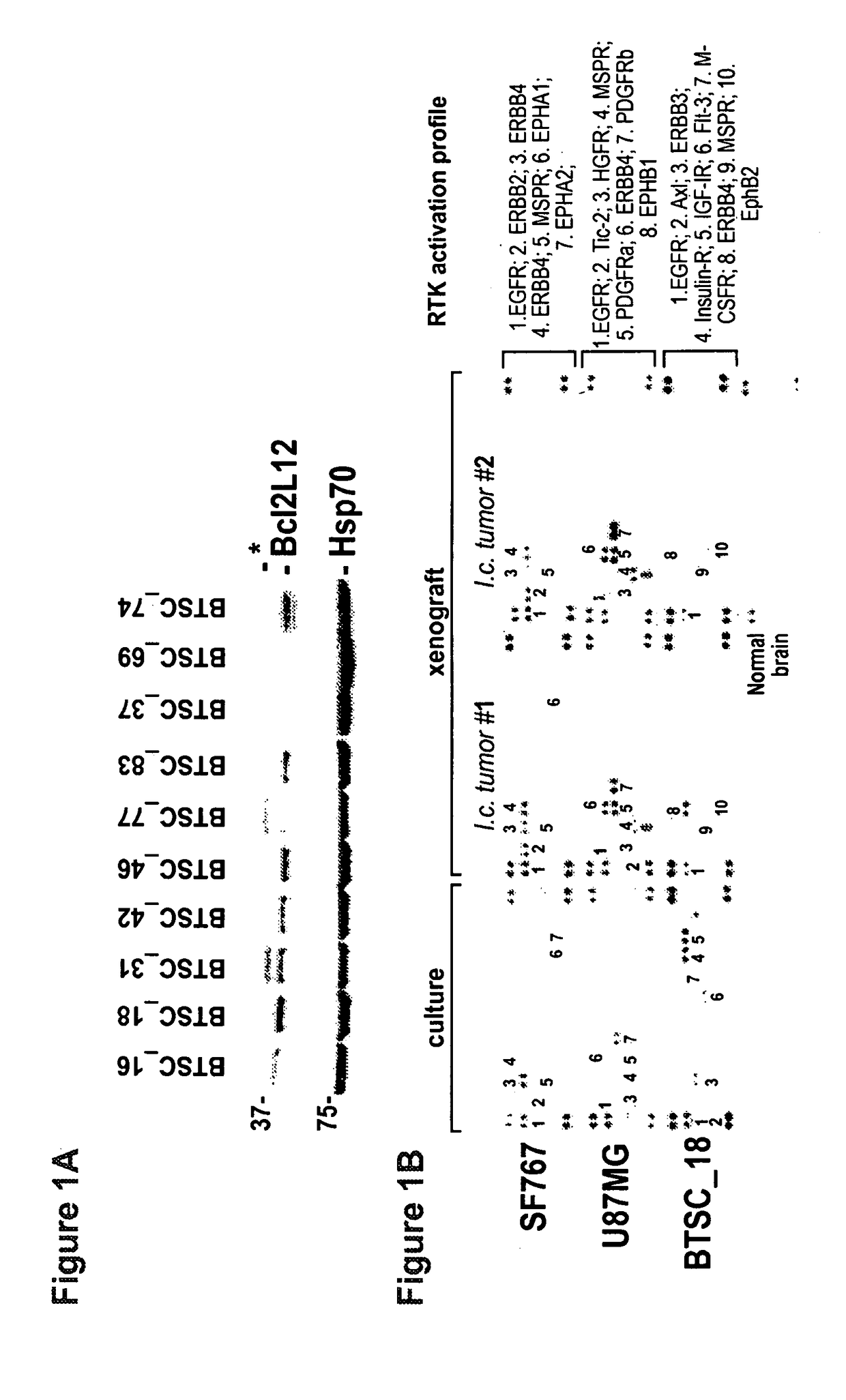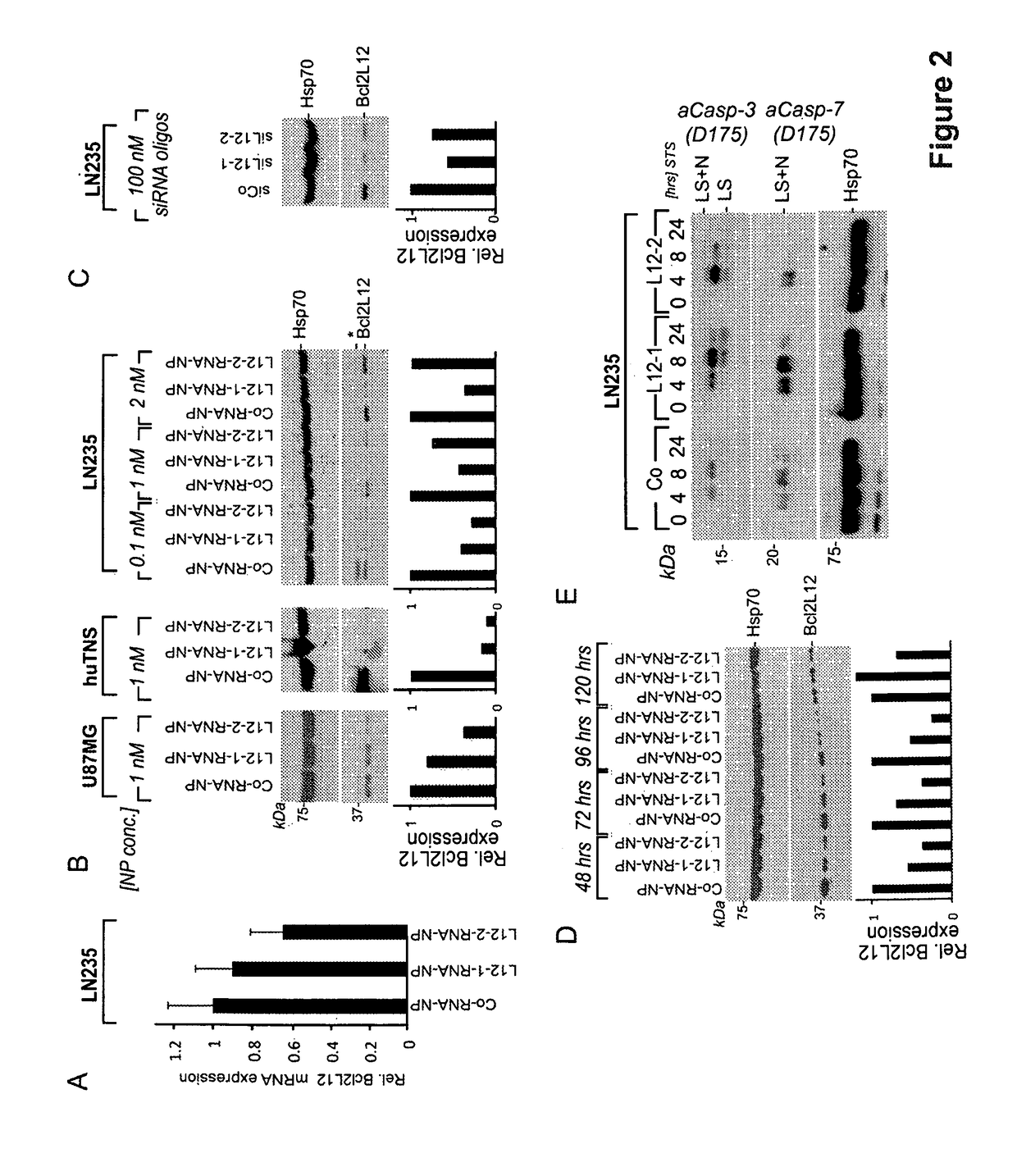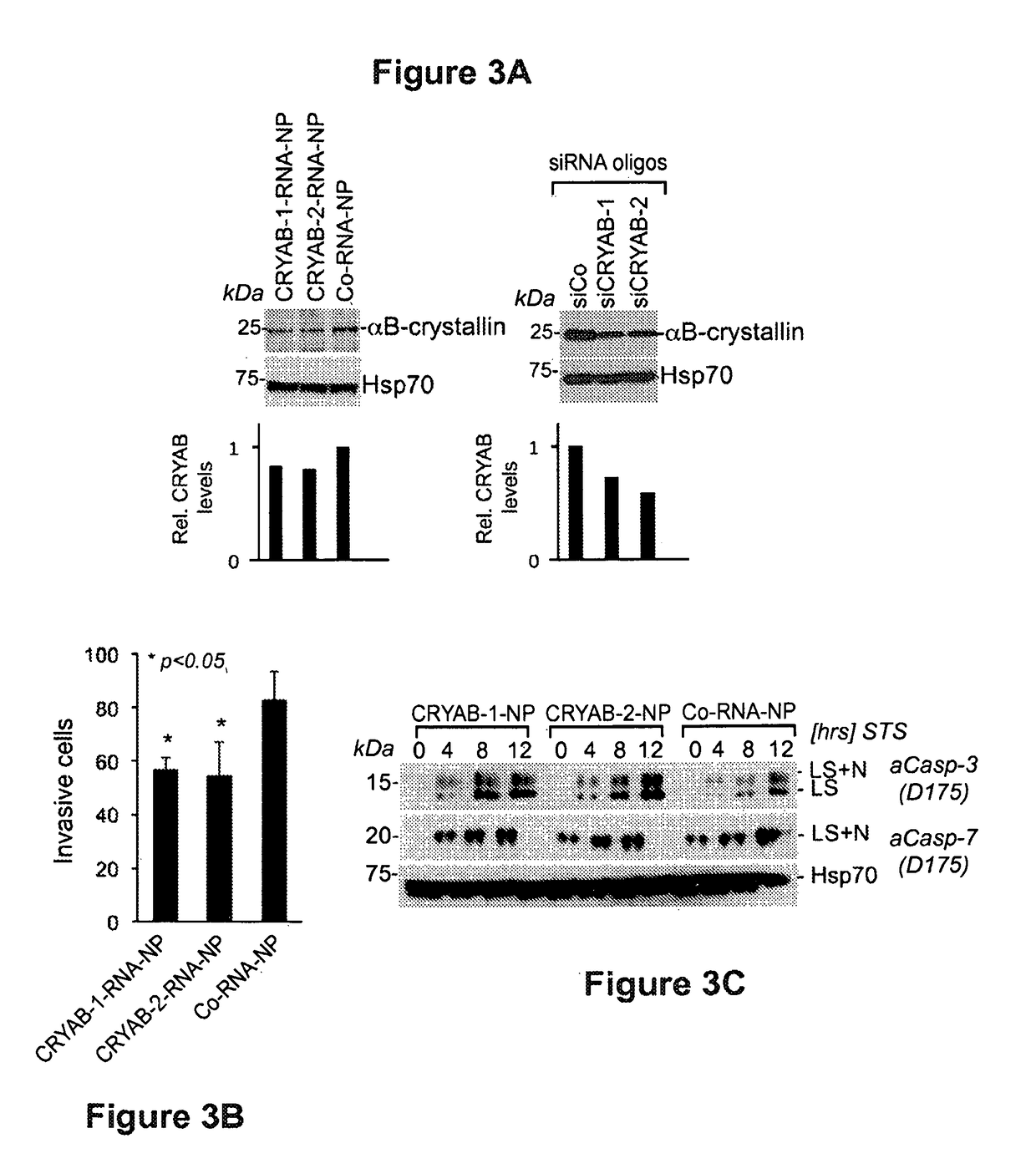Nanoconjugates able to cross the blood-brain barrier
a technology of nanoconjugates and blood brain barrier, which is applied in the direction of drug compositions, metabolic disorders, cardiovascular disorders, etc., can solve the problems of limiting the blood brain barrier, achieve no toxic effect, reduce off-target effects, and high cell uptake of nanoconjugates
- Summary
- Abstract
- Description
- Claims
- Application Information
AI Technical Summary
Benefits of technology
Problems solved by technology
Method used
Image
Examples
example 1
[0172]Bcl-2-like protein 12 (Bcl2L12) expression was assessed, and the compendium of activated receptor tyrosine kinases (RTKs) in human brain tumor stem cells (BTSCs) and derived orthotopic xenografts (FIG. 1). In line with previous studies in primary GBM tumor specimens [Stegh et al., Genes Dev. 21: 98-111 (2007)], robust expression of Bcl2L12 was identified in a majority of BTSCs tested and BTSC line 18 (huBTSC_18) with high Bcl2L12 expression was selected for initial functional studies (FIG. 1A). In addition, it was established that multiple RTKs are co-activated in glioma cells and in their corresponding orthotopic explants (FIG. 1B). Notably, the activation profile of RTKs in glioma cell lines in vitro is largely maintained in the explanted tumor—BTSC-derived grafts exhibit a more distinctive RTK signature when compared to the corresponding cultures, suggesting that the tumor microenvironment significantly impacts intratumoral RTK activation status of BTSC-initiated tumors.
example 2
[0173]For therapeutic development, Bcl2L12 targeting RNAi gold nanoparticles (RNA-Au NP; nanoconjugates as described herein) were generated and screened for their ability to knockdown endogenous Bcl2L12 in glioma cell lines and huBTSC_18. Bcl2L12-RNA-nanoconjugates that were capable of reducing Bcl2L12 mRNA levels by 40% were identified (FIG. 2A) and Bcl2L12 protein abundance by 60-95% (FIG. 2B)—L12-1- and L12-2-RNA nanoconjugates. Subsequently, a nanoconjugate concentration (0.1 nM) to robustly neutralize Bcl2L12 protein expression in LN235 cells was determined (FIG. 2B), which compared to 100 nM of conventional, lipoplex-delivered siRNA oligonucleotides (FIG. 2C) required to achieve a similar effect, indicating that RNAi-functionalized nanoconjugates are significantly more effective in silencing gene expression than conventional methods. Importantly, similar, highly robust KD efficacies in BTSC and confirmed persistence of Bcl2L12 protein knockdown up to 5 days post nanoconjugate-...
example 3
[0175]Having established broad pro-apoptotic activities of BCl2L12- and CRYAB-RNA-nanoconjugates in cell culture, the RNA-nanoconjugates functionality in orthotopic explant and genetically engineered mice was validated in vivo. These studies tested tumor regression in a genetically engineered glioma mouse model. Expanding on the known cellular and tissue uptake properties of these nanoconjugates, penetration of RNA-nanoconjugates into normal and cancerous intracranial tissues was documented and its uptake into BTSC xenografts was assessed (FIG. 4) upon IC injection. Following BTSC inoculation and Cy5-Au-NP administration, brains were dissected, and coronal sections were subjected to confocal fluorescence microscopy. FIG. 4A (lower panel) shows robust dispersion of RNA-nanoconjugates within the BTSC orthotopic tumor explant similar to U87MG grafts and FIG. 4B shows quantification of intracranial dispersion of fluorescence signal. Intracranial nanoconjugate uptake into tumor and non-t...
PUM
| Property | Measurement | Unit |
|---|---|---|
| mass | aaaaa | aaaaa |
| mean diameter | aaaaa | aaaaa |
| mean diameter | aaaaa | aaaaa |
Abstract
Description
Claims
Application Information
 Login to View More
Login to View More - R&D
- Intellectual Property
- Life Sciences
- Materials
- Tech Scout
- Unparalleled Data Quality
- Higher Quality Content
- 60% Fewer Hallucinations
Browse by: Latest US Patents, China's latest patents, Technical Efficacy Thesaurus, Application Domain, Technology Topic, Popular Technical Reports.
© 2025 PatSnap. All rights reserved.Legal|Privacy policy|Modern Slavery Act Transparency Statement|Sitemap|About US| Contact US: help@patsnap.com



